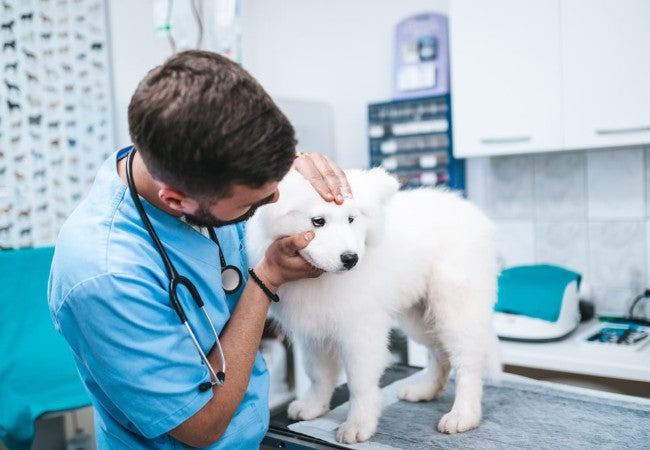Vet-Approved Guide: Anisocoria in Dogs – Causes, Diagnosis & 2025 Treatment Insights 🐶🐾

In this article
Vet-Approved Guide: Anisocoria in Dogs – Causes, Diagnosis & 2025 Treatment Insights 🐶🐾
By Dr. Duncan Houston BVSc
Anisocoria—unequal pupil size—is not a condition itself but a vital clue to underlying issues, from minor eye injuries to serious neurological or systemic diseases. This 2025 guide equips you to recognize it fast and seek targeted care. 🛡️
🔍 What Is Anisocoria?
Anisocoria occurs when one pupil is noticeably larger (mydriasis) or smaller (miosis) than the other—variations of ≥0.4 mm are generally significant. It can indicate problems in the eye or the nerves controlling it.
⚠️ Sudden Onset Is an Emergency
If your dog develops anisocoria suddenly—especially alongside squinting, redness, discharge, or vision issues—it demands immediate veterinary attention to prevent permanent damage.
❓ Common Causes
- 🔹 Ophthalmic causes: corneal ulcers, uveitis, glaucoma, iris atrophy, posterior synechia, intraocular tumors
- 🔹 Neurologic causes: Horner’s syndrome, oculomotor nerve disruption, brain lesions like tumors or head trauma
- 🔹 Mechanical damage: muscle injury to iris from trauma or surgery (mechanical anisocoria)
- 🔹 Congenital or age-related: iris hypoplasia, degenerative atrophy
- 🔹 Toxin effects: some medications or poisons affecting pupil control
🧐 Signs That May Accompany Anisocoria
- Red or cloudy eye, abnormal discharge, squinting, pawing
- Droopy eyelid, elevated third eyelid (common with Horner's syndrome)
- Vision changes such as bumping into objects
- Neurological signs like head tilt, disorientation, or seizures
🔬 How Vets Diagnose
- Physical and full ophthalmic exam using light–response tests and pupil measurements
- Schirmer tear test, fluorescein stain, and tonometry for corneal damage, tear production, and eye pressure
- Ophthalmic investigations: imaging (X‑ray, CT, MRI), bloodwork, CSF analysis when neurologic causes are suspected
- Referral to a veterinary ophthalmologist or neurologist for advanced diagnostics
🛠️ Treatment Depends on the Cause
There’s no direct “pupil fix”—therapy targets the root issue:
- 🔹 Uveitis: topical steroids or NSAIDs, cycloplegics to ease pain and inflammation
- 🔹 Glaucoma: pressure-lowering drops/surgery to protect vision
- 🔹 Corneal ulcers: antibiotic drops and protective collars
- 🔹 Horner’s syndrome: often resolves on its own, but treat the underlying cause if identified
- 🔹 Neurologic lesions: interventions could include surgery, medication, or follow-up monitoring
- 🔹 Mechanical damage or congenital changes: could be permanent—focus is on comfort and prevention of secondary issues
📈 Prognosis
Outcomes vary with the cause. Mild or treatable causes may fully resolve; others, like advanced glaucoma or neurological tumors may require ongoing management and could impact vision long-term.
📱 Support Tools for Care
- Ask A Vet: Expert advice anytime for symptom check-ins and treatment plans. 🩺
🧭 Final Thoughts
Anisocoria is a warning sign, not a diagnosis. It prompts action to preserve vision by identifying and treating underlying causes. If you see unequal pupils in your pup, schedule a vet visit immediately—especially if the change is sudden or painful. Your dog’s sight depends on it. 🐾
For timely guidance and ongoing support, download the Ask A Vet app today. 📲🐶






